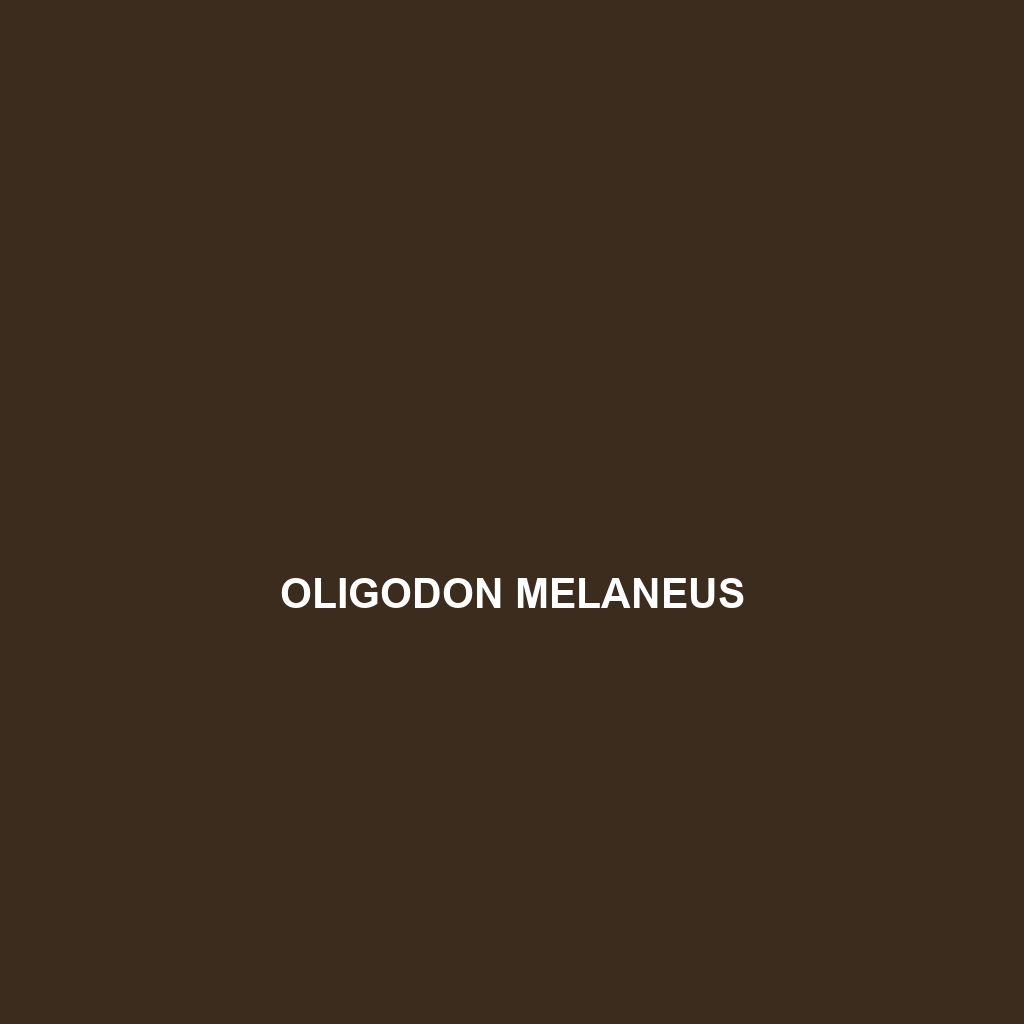Common Name
Oligodon melaneus
Scientific Name
Oligodon melaneus
Habitat
Oligodon melaneus, commonly known as the black ground snake, is primarily found in various geographic regions across Southeast Asia. This species thrives in diverse habitats, including lush rainforests, open savannas, and undisturbed temperate forests. The climatic conditions range from humid tropical settings to drier, subtropical environments, making them adaptable to varying ecosystems. They often prefer areas with abundant vegetation that provide shelter and hunting grounds, as well as proximity to water sources.
Physical Characteristics
Oligodon melaneus is a medium-sized snake, typically reaching lengths of around 60 to 75 centimeters. The body is slender and elongated, which allows it to navigate through dense underbrush. Its coloration is primarily glossy black or dark brown, which serves as excellent camouflage against the leaf litter of its habitat. One of the distinctive features of this species is its belly, which tends to be lighter, often showcasing hues of cream or yellow. The scales are smooth, and when disturbed, this snake may flatten its body to appear larger and deter potential predators.
Behavior
This species is predominantly nocturnal, becoming active mainly at night to hunt and explore. Oligodon melaneus exhibits solitary behavior, rarely being seen with other individuals except during the mating season. They are not known for long migrations but may wander in search of food or suitable habitats. During the day, they often seek shelter in burrows or beneath rocks, where they remain inactive to avoid the heat. They have unique mating rituals that involve elaborate courtship displays, including tail movements and body rubbing.
Diet
Oligodon melaneus is primarily carnivorous, with a diet consisting mainly of small rodents, lizards, and amphibians. Their keen sense of olfaction helps them locate prey in the undergrowth. They are constrictors, using their muscular bodies to subdue their catch before consumption. This species also displays opportunistic feeding behaviors, occasionally preying on larger insects and invertebrates when small mammals are less available.
Reproduction
The reproductive cycle of Oligodon melaneus typically occurs during the wet season, with mating primarily taking place from late spring to early summer. The female usually lays between 5 to 15 eggs in hidden locations, such as under leaf litter or inside abandoned burrows to protect them from predators. The incubation period lasts about 60 to 80 days, after which the hatchlings emerge fully developed. Parental care is minimal, with juveniles being independent from birth, which is common among many species of snakes.
Conservation Status
As of now, Oligodon melaneus is classified as Least Concern by the International Union for Conservation of Nature (IUCN). However, habitat destruction due to deforestation and urbanization poses potential threats to their population. Conservation efforts are crucial in mitigating these impacts, preserving their natural habitats, and ensuring the longevity of the species. Awareness and protective measures in areas where they thrive are essential to maintain ecological balance.
Interesting Facts
One fascinating aspect of Oligodon melaneus is its ability to mimic the colors of some poisonous snake species, a strategy known as batesian mimicry. This adaptation helps deter predators who may mistake it for a more dangerous snake. Another interesting fact is that this species possesses a unique ability to sense vibrations through the ground, allowing it to detect the presence of potential threats or prey nearby.
Role in Ecosystem
Oligodon melaneus plays a vital role in its ecosystem as both a predator and prey within the food web. By preying on small mammals and reptiles, they help control these populations, which in turn maintains ecological balance. As a food source for larger predators such as birds of prey and larger snakes, they contribute to the nutrient cycle in their habitats. Their presence indicates a healthy and functioning ecosystem, highlighting their importance to biodiversity in the regions they inhabit.
This description ensures optimal readability and SEO effectiveness while providing comprehensive information about the species Oligodon melaneus. Each section contributes to a better understanding of the species within its ecological context.
